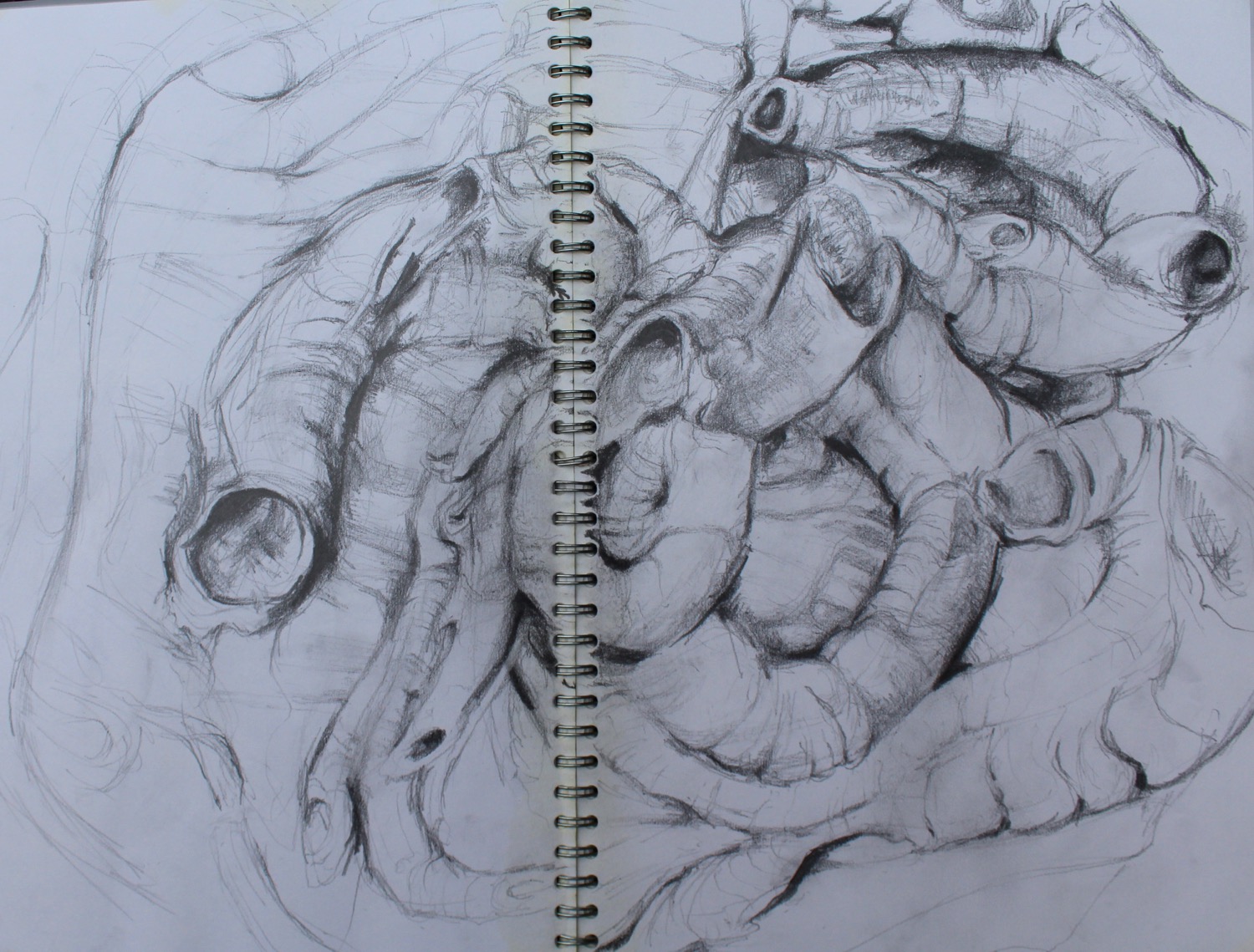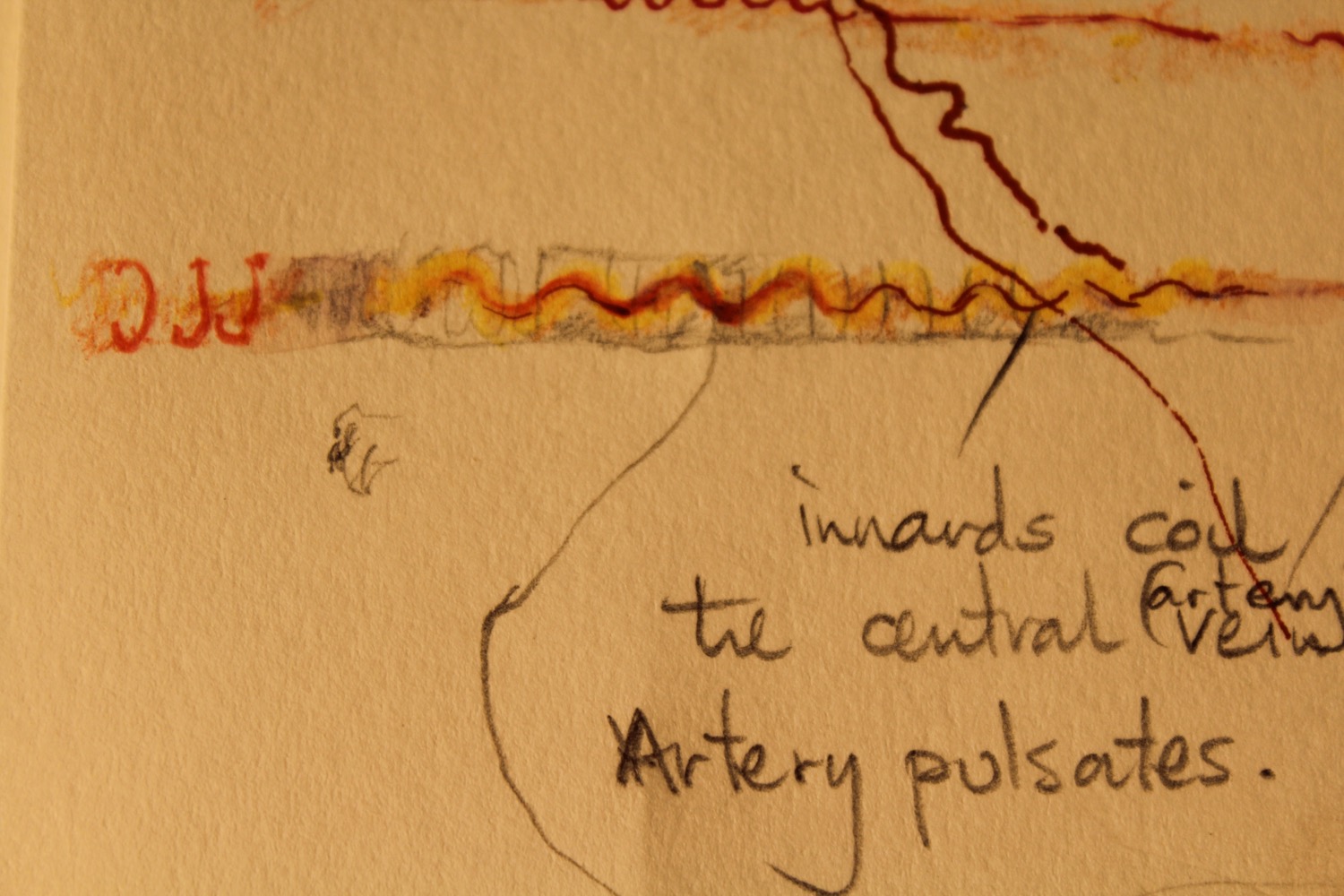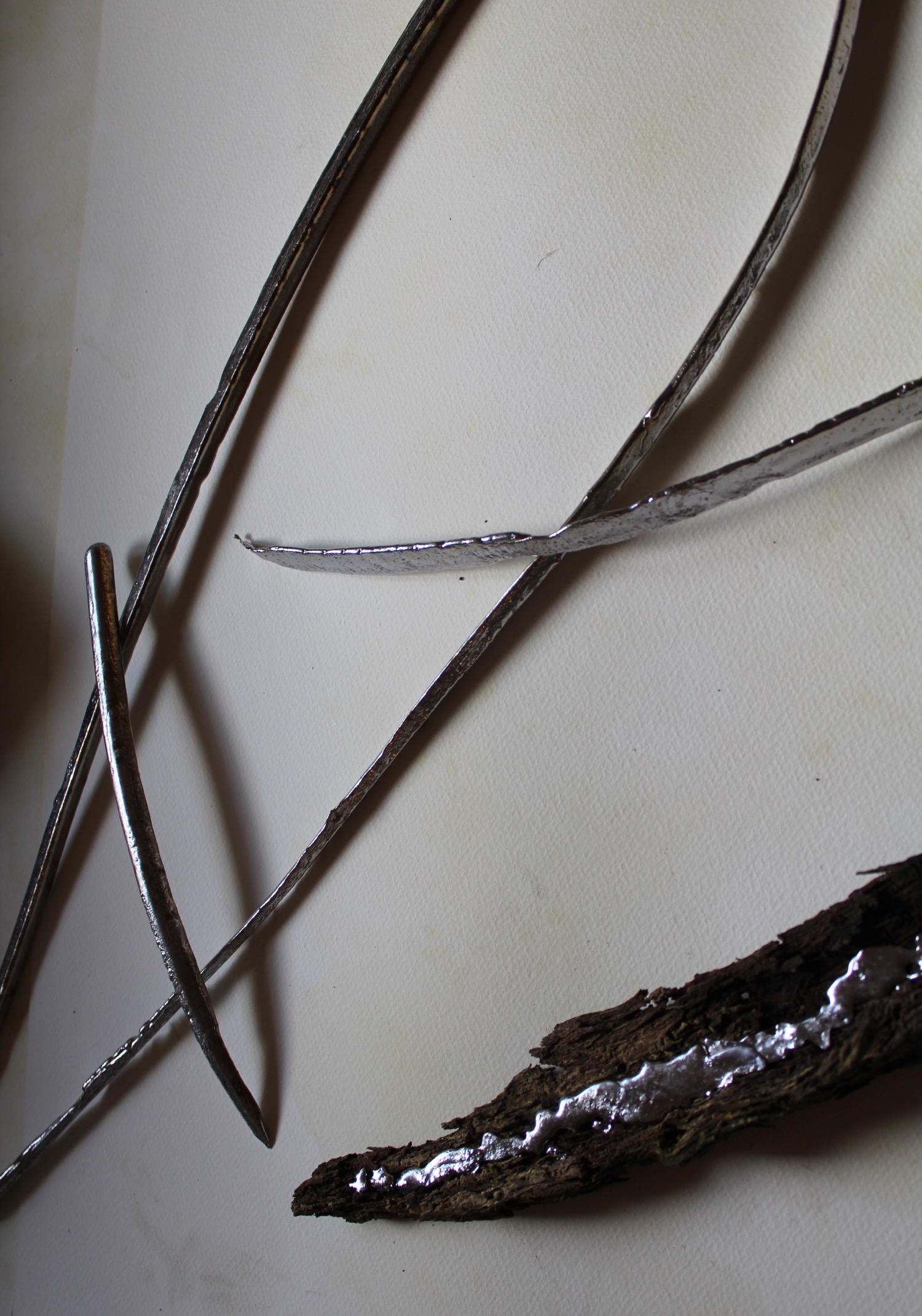Months of research and writing for research methodologies on my MA is now finally over and I am looking forward to focusing more on developing my practice. I have been looking at worms. I studied an earthworm through a magnifying glass. Its semi-transparent body enabled me to view its internal organs which buckle and coil as it moves. I am intrigued by a pulsating deep pink artery that runs centrally through the length of their bodies, delineating this coiling movement. My ideas are revolving around lead lines, reinforced with steel rod in parts, that suggest huge 3d worm forms, skeletal, with linear coiled pink innards made from copper wire, heated red glass, orange twine and plastic strands. This may change, perhaps it will seem too representational, although the expansive forms meandering through space could be quite breathtaking.



As an experiment, I have created a small worm colony in an old fish tank, with dead leaves for them to munch. In a few weeks I plan to remove the worms by attracting them to the top, then cast their tunnels. If it works, it will be interesting to see what their tunnels look like, how they interconnect.
I have cast some more 3d lead lines, using routed wood blocks as moulds, made with a friend (Nick Weaver)’s help. The wooden lines were gouged with 4 different router cutters, so that I have a range of curved and v-shaped lines. The process was slow, as the lead didn’t melt properly on my studio electric hob, until I directed a gas blowtorch flame into the hot pan too. When I poured, the slag remained in the pan, so the lines were smooth, clean lead. I am considering how these might become more 3d, or whether they don't need to, and how to convey message with method and materials, creating forms that carry natural associations, bridging the gap between science and art.